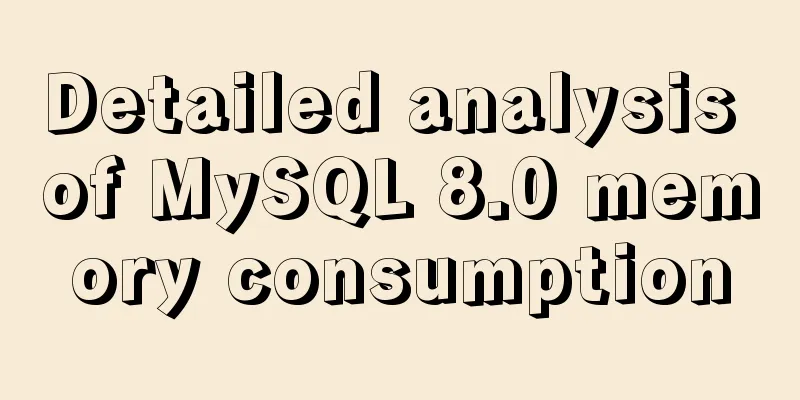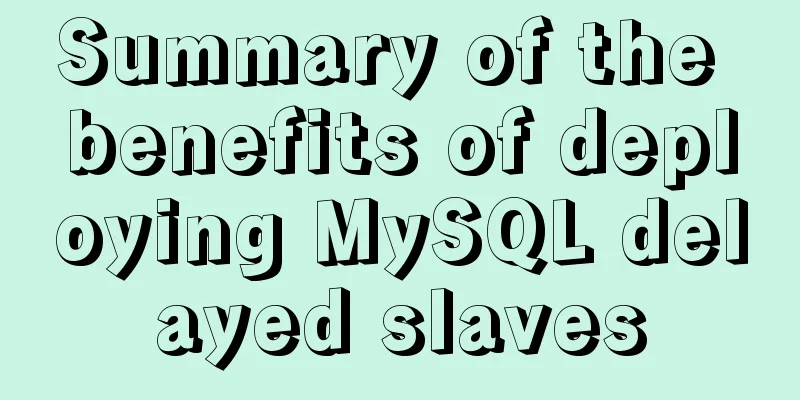Detailed explanation of firewall rule settings and commands (whitelist settings)

|
1. Set firewall rules Example 1: Expose port 8080 to the outside world firewall-cmd --permanent --add-port=8080/tcp Example 2: Only servers in the 192.168.1.1/24 network segment can access port 3306 of the MySQL service #Add rule firewall-cmd --permanent --add-rich-rule="rule family="ipv4" source address="192.168.1.1/24" port protocol="tcp" port="3306" accept" #reload to make it effective firewall-cmd --reload Example 3: Port forwarding, forwarding access to port 3306 of the local machine to port 3306 of the 192.168.1.1 server # Enable spoofing IP firewall-cmd --permanent --add-masquerade # Configure port forwarding firewall-cmd --permanent --add-forward-port=port=3306:proto=tcp:toaddr=192.168.1.2:toport=13306 Note: If you do not enable spoofing IP, port forwarding will fail; secondly, make sure that the port on the source server (3306) and the port on the target server (13306) are open. 2. Firewall Command 1. Start, stop, and restart firewalld 1. Stop systemctl stop firewalld.service 2. Start systemctl start firewalld.service 3. Restart systemctl restart firewalld.service 4. Check the status: systemctl status firewalld 5. Disable firewall startup systemctl disable firewalld 6. Set the firewall to be enabled at startup: systemctl enable firewalld.service 2. Check firewall rules and status 1. Check the default firewall status (notrunning is displayed when it is turned off, and running is displayed when it is turned on) firewall-cmd --state 2. View firewall rules (only display firewall policies in /etc/firewalld/zones/public.xml) firewall-cmd --list-all 3. View all firewall policies (that is, display all policies under /etc/firewalld/zones/) firewall-cmd --list-all-zones 4. Reload the configuration file firewall-cmd --reload 3. Configure firewalld-cmd Check the version: firewall-cmd --version View help: firewall-cmd --help Show status: firewall-cmd --state View all open ports: firewall-cmd --zone=public --list-ports Update firewall rules: firewall-cmd --reload View zone information: firewall-cmd --get-active-zones Check the zone to which the specified interface belongs: firewall-cmd --get-zone-of-interface=eth0 Deny all packets: firewall-cmd --panic-on Cancel the deny state: firewall-cmd --panic-off Check whether it is rejected: firewall-cmd --query-panic 4. How to open a port? 1. Add (--permanent is effective permanently, and will become invalid after restart without this parameter) firewall-cmd --zone=public --add-port=80/tcp --permanent 2. Reload (make the modified rules effective) firewall-cmd --reload 3. View firewall-cmd --zone=public --query-port=80/tcp 4. Delete firewall-cmd --zone= public --remove-port=80/tcp --permanent Because the corresponding rules of ssh.xml are defined in /usr/lib/firewalld/services/ 5. systemctl is the main tool in CentOS7's service management tools, which integrates the functions of the previous service and chkconfig. Start a service: systemctl start firewalld.service Shut down a service: systemctl stop firewalld.service Restart a service: systemctl restart firewalld.service Display the status of a service: systemctl status firewalld.service Enable a service at boot: systemctl enable firewalld.service Disable a service at boot: systemctl disable firewalld.service Check whether the service is started: systemctl is-enabled firewalld.service View the list of started services: systemctl list-unit-files | grep enabled View the list of services that failed to start: systemctl --failed The above is the full content of this article. I hope it will be helpful for everyone’s study. I also hope that everyone will support 123WORDPRESS.COM. You may also be interested in:
|
<<: MySQL character set garbled characters and solutions
>>: Detailed steps to install MySQL 5.6 X64 version under Linux
Recommend
Summary of 6 solutions for implementing singleton mode in JS
Preface Today, I was reviewing the creational pat...
Solve the margin: top collapse problem in CCS
The HTML structure is as follows: The CCS structu...
JavaScript implements the generation of 4-digit random verification code
This article example shares the specific code for...
MySQL optimization query_cache_limit parameter description
query_cache_limit query_cache_limit specifies the...
Recommend 60 paging cases and good practices
<br />Structure and hierarchy reduce complex...
How to migrate local mysql to server database
We can use the scp command of Linux (scp cannot b...
Using css-loader to implement css module in vue-cli
【Foreword】 Both Vue and React's CSS modular s...
Summary of seven sorting algorithms implemented in JavaScript (recommended!)
Table of contents Preface Bubble Sort Basic Algor...
Detailed steps to deploy SpringBoot projects using Docker in Idea
Preface Project requirements: Install the Docker ...
JavaScript implements displaying a drop-down box when the mouse passes over it
This article shares the specific code of JavaScri...
MYSQL master-slave replication knowledge points summary
An optimization solution when a single MYSQL serv...
How to implement vue page jump
1. this.$router.push() 1. Vue <template> &l...
Detailed examples of replace and replace into in MySQL into_Mysql
MySQL replace and replace into are both frequentl...
Interpretation of syslogd and syslog.conf files under Linux
1: Introduction to syslog.conf For different type...
How to install Apache service in Linux operating system
Download link: Operating Environment CentOS 7.6 i...









